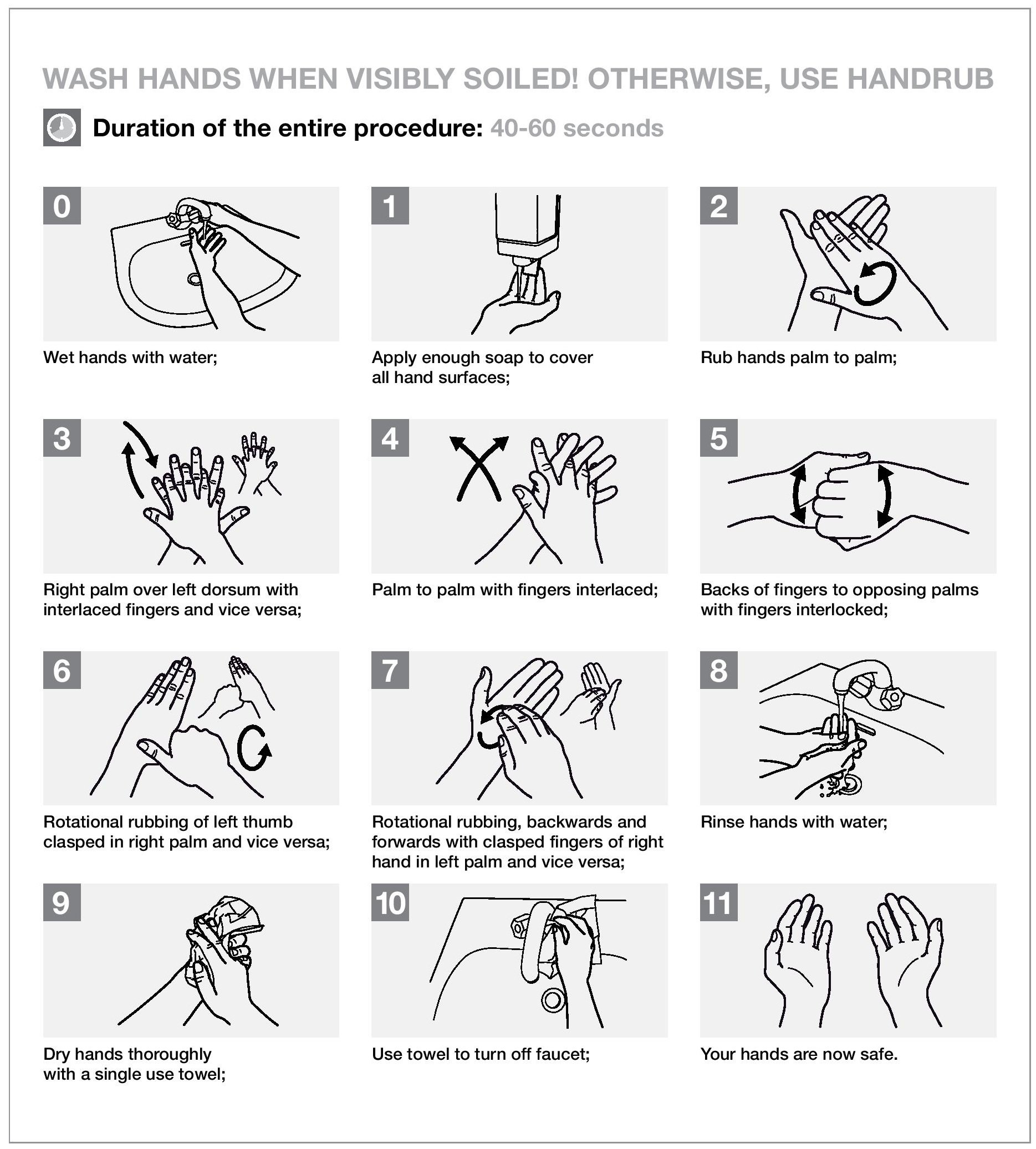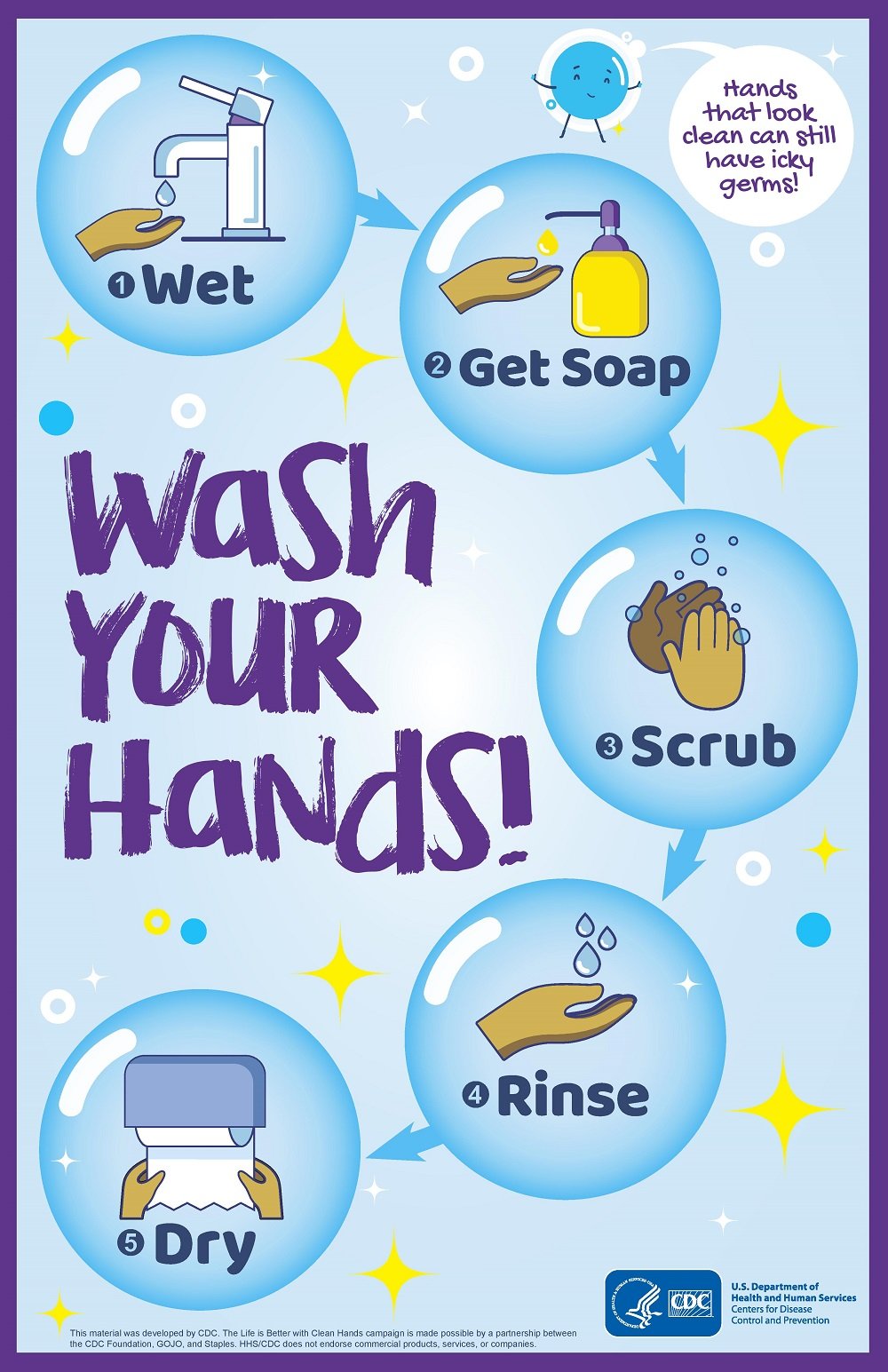Interesting Science Videos
Introduction basic hygiene practices: Handwashing
- Basic hygiene is a mechanism of practicing and maintaining cleanliness.
- Poor hygienic methods have an extreme impact on causing infections ranging from skin infections to respiratory tract infections and gastrointestinal infection.
- Most respiratory and gastrointestinal infections have been associated more often than usual that they are transmitted through a lack of or poor hand washing methods.
- Handwashing is the most primary type of basic hygienic practices.
- It is a practice that should be used often by all persons basically to remove or reduce the burden of pathogens found on the surface of the hands.
- Hands naturally hold and touch a variety of things that could be harboring microorganisms that cause infections.
- Some microbes can survive for long periods on the surfaces of items because of their morphologies which easily transmit to the individual who touches it and he/she can transmit it to another by handshaking and when they are touched, they then infect the host, who can transmit it to other individuals.
- These include Bacteria (Mycobacterium tuberculosis, Clostridium spp, Bacillus spp), Viruses (rhinovirus, coronaviruses, orthomyxoviruses), Fungi (fungal spores from Aspergillus, Candida spp, Dermatophytes), and parasites (Ascaris lumbricodes, Entamoeba, Giardia, etc)
- Amidst the recent outbreak of the COVID-19 infection, a viral infection that is caused by a novel coronavirus, SARS-CoV-2, basic hygiene mechanisms like handwashing has put to perspective on how important it is to practice and maintain them to prevent transmission, spread, and infection of the virus.
However, basic hygienic methods are not only linked to the COVID-19 but they are essential in maintaining good health and preventing the spread of germs and infectious agents to uninfected persons.
Besides the guidelines taught in school on how to wash and maintain the hygiene of the hands, International health Organisations have stated the essential guideline that should and must be practiced by all, to prevent transmission and spread of very infectious agents. These guidelines have been put in place to also assist health care workers to care for the patients properly, to prevent spreading contagious and infectious microorganisms to their patients, causing grievous infections and ultimately, death.
So, which organizations have stipulated guidelines of proper handwashing techniques that should be practiced globally?
Several national and Global organizations and agencies govern the health standards and policies set to monitor, prevent infections and also ensure patient care is critically maintained with high standardized procedures to prevent spread, reinfections and development of untreatable infections due to drug resistance. Some of these organizations include the Centre for Disease and Control (CDC), and the World Health Organisation (WHO). This brief will state all the guidelines recommended by these global bodies that govern the health standards and policies globally.
The World Health Organization (WHO)
The World Health Organization, WHO is a global organization that operates in controlling global health standards with its aim being to provide better health standards for everyone, everywhere. With coordination in an era of globalization, the WHO has served to provide the most effective health standards by combating diseases, providing care and programs that govern health-related issues worldwide.
With each stated program, the WHO sets guidelines that should and must be followed by all countries under the umbrella of WHO, i.e the 194 countries worldwide that are served by the WHO.
Concerning handwashing hygienic practices, the WHO has set aside guidelines that must provide effective patient safety, defining the Why? Who? and How? these safety techniques of handwashing must be followed.
Guidelines of handwashing by the World Health Organization (WHO)
The WHO recommended that when the germs are invisible, thorough hand-rubbing with handwashing sanitizers (containing at least 60% of alcohol) for about 20-30 seconds, fully rubbing the hand back and forth, the back of the hand, in between the finger and rubbing the fingers. This practice is applied majorly by hospital care and health workers.

Figure: Diagram of hand washing steps given by WHO. Source: WHO
But the use of soap is recommended when the germs are visible or the hand is visibly soiled with dirt. These guidelines include:
- Wet the hands with water;
- Apply enough soap to cover the entire hand surface,
- Rub the palms of the hands together,
- The back of the hand and in between the fingers and in the nails,
- Backs of fingers to opposing palms with fingers interlocked;
- Rotational rubbing of left thumb clasped in right palm and vice versa
- Rotational rubbing, backward and forwards with clasped fingers of the right hand in left palm and vice versa;
- Rinse hands with water;
- Dry hands thoroughly with a single-use towel:
- Use a towel to turn off faucet;
- Your hands are now safe
Hand Washing Video by WHO

The Centre for Disease and Control, CDC
The CDC is an American based organization that serves to provide better healthcare systems, safety, and protect the country against security threats. It serves as the country’s National Health Protection Agency. They aim at detecting, responding and tackling health-related threats to the country.
Because of its major role in health services to the USA, the World Superpower, the CDC has over decades set several stations in most countries in the world, serving to provide the same services it rendered to the American people, by protecting the health of the people, and therefore it also serves a global role. It functions globally in collaboration with other national organizations set up by various individual countries, to provide health services including research and training in Medical and health issues.
What are the guidelines put in place by the Centre for Disease and Control, CDC?
The CDC states that handwashing practices are meant to protect all from the risks of sicknesses. Hand washing should apply to the three basic rule of, Before, During and After, doing certain things such as:
- Before, during and after cooking food
- Before and after eating
- Before and after treating a wound
- Before and after caring for a patient
- After visiting the toilet
- After holding a pet of a wild animal
Hand washing guidelines by the Centre for Disease and Control (CDC)
According to the CDC, handwashing practice is easy and its the most effective way to prevent the spreading of germs, because germs can spread from one person to another and spread throughout the entire community.

Figure: Diagram of hand washing steps given by the CDC. Source: CDC
There are five guidelines recommended by the CDC, to be practiced every time. They are:
- Wet your hands with clean, running water (warm or cold), and apply soap.
- Lather your hands both front and back including the fingers and nails, by rubbing them together with the soap.
- Scrub your hands for at least 20 seconds.
- Rinse your hands well under clean, running water.
- Dry your hands using a clean towel or air dry them
Note: Use soap or alcohol-based hand sanitizer to get rid of germs.
Hand Washing Video by CDC

Conclusion
Hand washing is a hygienic practice that is critical in preventing spread and transmission of germs. It MUST be practiced regularly and systematically to cub infections in home-based communities, work-based communities, and hospital-based communities.
In an era where flu, viral infections antimicrobial resistance superbugs are emerging, it is critical to monitor and maintain high-level standards of hygiene to cub the transmission cycles of diseases, thus preventing spread and infections.
References and sources:
- https://www.cdc.gov/handwashing/when-how-handwashing.html
- https://www.nhs.uk/live-well/healthy-body/best-way-to-wash-your-hands/
- https://www.who.int/gpsc/5may/Hand_Hygiene_Why_How_and_When_Brochure.pdf
- https://www.stanfordchildrens.org/en/topic/default?id=handwashing-85-P00628
- https://www.cdc.gov/about/organization/mission.htm
- https://www.who.int/about
